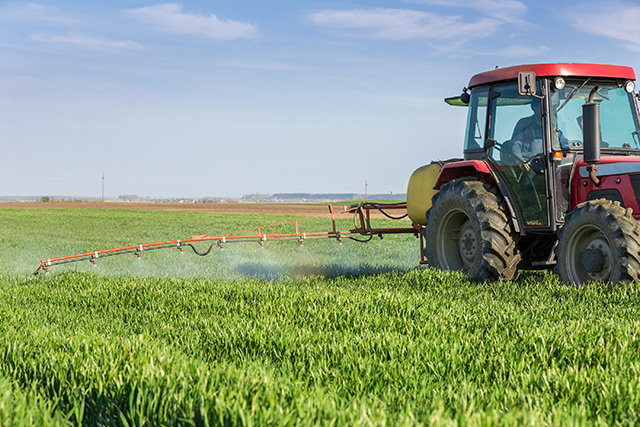Benomyl — toxicity, side effects, diseases and environmental impacts
11/23/2017 / By Frances Bloomfield

Benomyl is a systemic benzimidazole fungicide, meaning that this substance works by interfering with cell division and hyphal growth of affected fungi. Its most widespread usage is against the fungal diseases that impact field crops, ornamental plants, fruits, and mushrooms. For these purposes, benomyl can be purchased as a dry flowable powder, wettable powder, or dispersed granules.

List of known side effects
Chronic exposure to benomyl has been connected to toxic effects in animal reproduction and genetic damage in humans. Benomyl, then being marketed under the brand name of Benlate, was named as the cause for numerous children in the United Kingdom being born without eyes. According to a report by BBC from 2003, scientists connected benomyl exposure with the disrupted formation of eyes in human fetuses, leading to several babies having microphthalmia (wherein the eyes are smaller than normal) or anophthalmia (wherein the the baby was born with the eyes absent and the eyelids sealed shut).
Coming into direct contact with benomyl can result in skin irritation. Individuals with particularly sensitive skin may experience allergic skin reactions, while prolonged or repeated contact with this substance can cause skin sensitization.
In addition to being a dermal irritant, benomyl is an ocular and respiratory irritant as well. Inhaling benomyl is notably risky because doing so can result in acute toxicity.
Benomyl can linger in the environment: it binds to soil, doesn’t dissolve in water. Traces of this fungicide have been found in plants 23 days after application. Furthermore, benomyl has been found to be highly toxic to fish, moderately toxic to certain species of birds (redwing blackbirds), and very lethal to earthworms.
When exposed to high heat, benomyl emits nitrogen oxide fumes. Nitrogen oxides are gases that can trigger severe respiratory problems over a long period of time, while low levels can bring about eye, nose, throat, and lung irritation, as well as shortness of breath, fatigue, and nausea.
Body systems affected by benomyl
Depending on the route of exposure, benomyl can target the skin, eyes, and respiratory system. Moreover, benomyl has been observed as causing reproductive problems, making it a potential reproductive system toxicant.
Items that can contain benoyml
In addition to Benlate, benomyl is marketed under many other commercial names. These include:
- Agrodit
- Benex
- Benosan
- Fundazol
- Fungidice 1991
- Tersan
How to avoid benomyl
As per the United States Environmental Protection Agency (EPA), benomyl is registered for post-harvest use on apricots, citrus fruits, cherries, prunes, peaches, and plums. As such, it’s best to avoid purchasing these fruits from supermarkets, to minimize benomyl exposure.
Persons involved in the handling of benomyl are advised to wear the appropriate protective clothing when in close proximity to this substance. Proper respiratory protection is recommended. The area where benomyl exposure occurs should have emergency showers and eyewash fountains in case direct contact happens.
For storage, keep benomyl in a dry, well-ventilated area without sewer access or drainage, and separated from food and feedstuffs.
Where to learn more
- Pesticides may directly cause Parkinson’s disease
- STUDY: Exposure to certain pesticides makes you 6 times more likely to develop ALS
- Chemicals.news
- Pesticides.news
- Toxins.news
Summary
Benomyl is a dermal, respiratory, and ocular irritant that has been linked to incidences of microphthalmia and anophthalmia, both genetic defects. High temperatures can cause benomyl to decompose and emit nitrogen oxide-containing fumes. Moreover, benomyl has been found to be toxic to birds and fish, and lethal to earthworms.
Sources include:
ExToxNet.ORST.edu
News.BBC.co.uk
PubChem.NCBI.NLM.NIH.gov
InChem.org
Tagged Under:



















